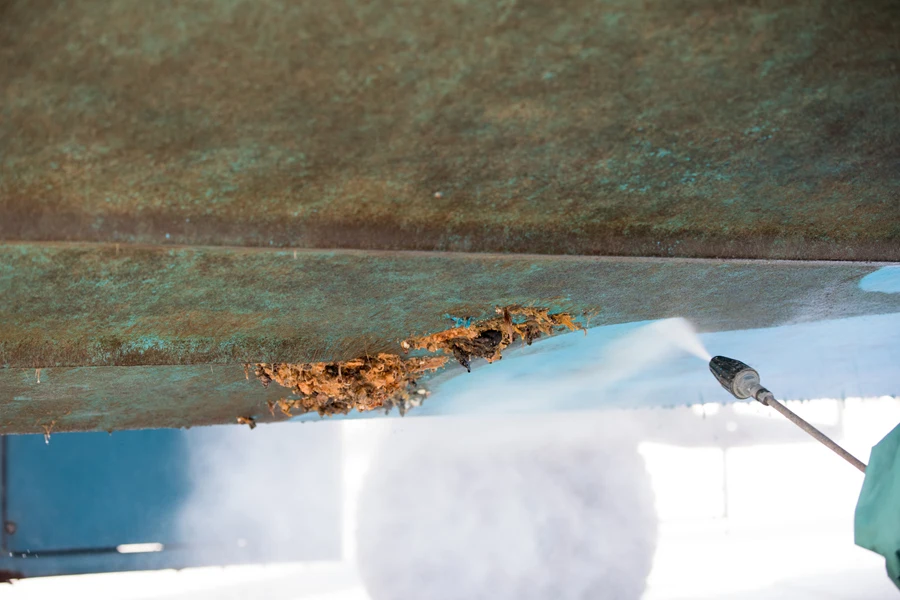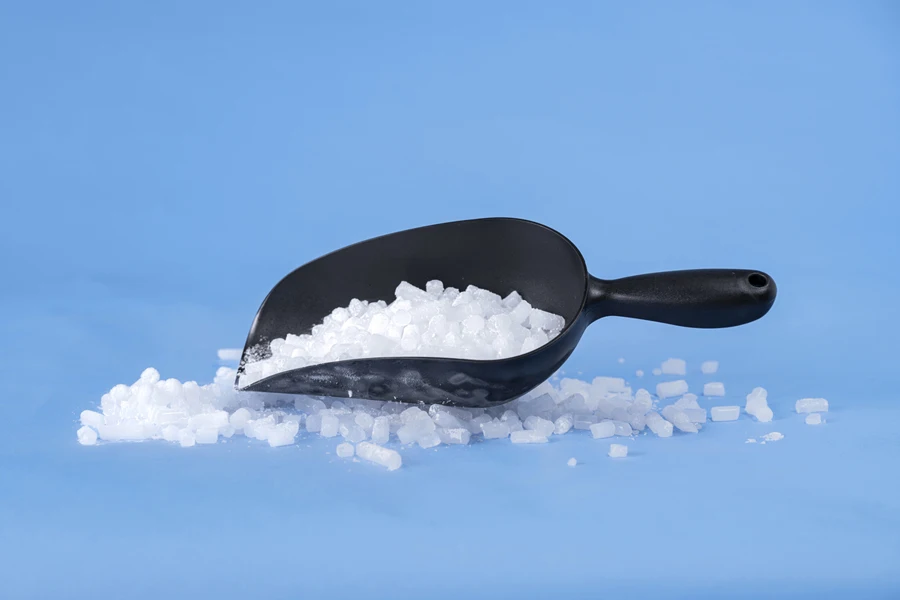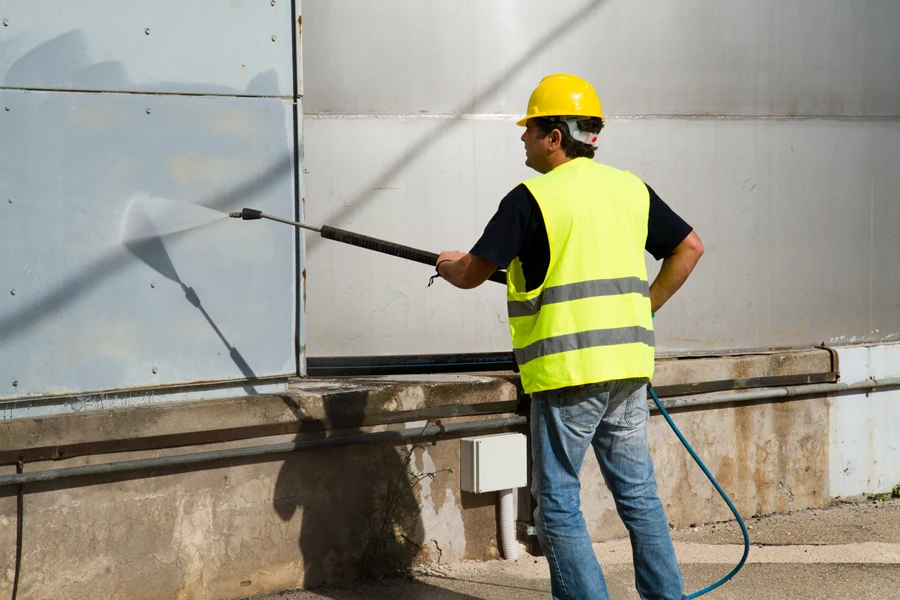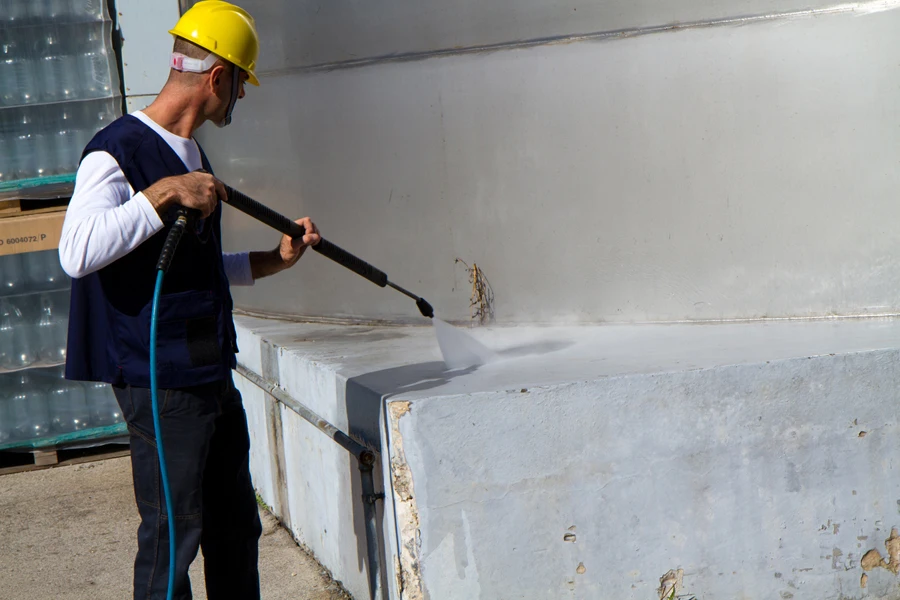Businesses that clean heavy machinery, delicate electronics, or intricate parts know how tricky it can be to remove dirt and grime without damaging surfaces. Water may not always be effective, while chemicals could cause more damage than good. That’s why dry Ice blasters are often the perfect solution, as they are fast, efficient, and chemical-free.
This article will guide businesses through all the essential details to know to stock the best dry ice blasters for their buyers in 2025.
Table of Contents
What exactly is dry ice blasting?
How to choose the right dry ice blaster
In conclusion
What exactly is dry ice blasting?

Before getting into the technical details, it’s helpful to understand the concept of dry ice cleaning. This method uses dry ice pellets (frozen carbon dioxide) shot out at high speeds to clean surfaces. The ice sublimates from solid to gas on impact, leaving no residue. That means no water, no harsh chemicals, and no extra mess to clean up afterward.
This process can tackle everything from thick grease and grime to paint and mold. It’s the go-to option for many industries because it’s effective, environmentally friendly, and gentle on surfaces. It won’t wear down the equipment, and businesses won’t have to worry about chemical damage.
Benefits of ice blasting
- Safe for the environment: Since it uses dry ice, which evaporates, there’s no water waste or harmful chemical runoff.
- Non-abrasive: Ideal for surfaces that can’t handle rough treatments—like delicate metals, electronics, or intricate machinery.
- Zero residue: The only mess left is the dirt and grime removed, not extra cleanup from the cleaning itself.
- Less downtime: There is no need to dry or scrub away leftover chemicals, so businesses can return to work faster.
How to choose the right dry ice blaster
1. Single hose or dual hose
First, businesses need to know that ice blasters generally come in two types: single-hose systems and dual-hose systems. The one they choose will depend on what kind of cleaning they’re doing for their customers or themselves.
Single hose systems
This type sends dry ice pellets mixed with compressed air through a single hose straight to the surface. There are no frills, just raw blasting power. If operators work with heavy-duty grime, like removing thick paint layers or caked-on grease, this system gives you a powerful, direct blast. It’s great for tough jobs.
Best for: Manufacturing, automotive, or other industrial uses where users need maximum cleaning power.
Dual hose systems
This system uses two hoses: one for the dry ice pellets and another for the compressed air. The two mix at the nozzle, so operators have more control over the pressure and speed. It’s more adjustable and gentler, so if the application involves something that could easily get damaged, this system is more forgiving. They can fine-tune the blast based on how delicate the surface is.
Best for: Precision work, like cleaning delicate equipment, soft metals, or electrical components. Think light touch, but still effective.
Which one is the best choice? Businesses that constantly clean tough, stubborn materials should use the single-hose system for more power. However, the dual-hose system is their best bet if they need more control working with sensitive surfaces.
2. Pay attention to these specs

Here’s the real meat of the matter: the technical specs. These features will determine how well the ice blaster performs for their unique needs. Always look out for these specs when choosing this machine.
Air Pressure (PSI)
Air pressure is the power behind the blast. It’s measured in PSI (pounds per square inch), with higher numbers meaning more forceful cleaning. A high PSI (150 to 300) is perfect for users working on tough surfaces like rusted metal or old, stubborn paint. The higher the PSI, the harder the dry ice pellets hit the surface, breaking through thick grime layers.
On the other hand, low PSI (40-150 PSI) works better for more sensitive work since users will want to dial down the pressure. Cleaning fragile surfaces with too much force could lead to damage, and no one wants that.
Note: The good news is that some machines let users adjust the PSI on the fly to handle different tasks without switching machines.
Air Volume (CFM)
CFM (cubic feet per minute) measures airflow. A higher CFM means the machine can push out more air, giving users a steady, powerful stream. Businesses generally need dry ice blasters with high CFMs (150 to 200 for big jobs, like cleaning large industrial spaces or super grimy surfaces).
However, smaller or lighter cleaning won’t need more than 50 to 100 PSI. Just ensure the air compressor matches the machine’s needs. Otherwise, the ice blaster might not work at full power.
Pellet Size
This might seem like a small thing, but the size of the dry ice pellets can make a big difference in how the machine cleans. Standard pellets (3mm) are the most common pellet size and work for most general cleaning tasks—good for removing surface dirt, mold, or light buildup.
Micro pellets (1.5mm) are smaller, making them great for more detailed, delicate work. If users clean intricate machinery or surfaces that need a gentle touch, this is what they’ll want to use.
Some machines even have built-in pelletizers to create pellets of the right size from a block of dry ice. That kind of flexibility can be a real bonus, especially if they regularly deal with different types of surfaces.
3. Other features worth considering

Businesses can also consider a few extra features that make using an ice blaster slightly easier. Here’s what to look for:
Pressure regulation controls
The more control users have, the better. Machines that let them adjust the air pressure and feed rate will give them flexibility. This way, they’re not using too much force on delicate materials or wasting dry ice when they don’t need to.
Moisture control systems
Businesses do not deal with water when they use dry ice, but sometimes condensation can build up on the surface they’re cleaning, especially if it’s warm. Some machines have moisture control systems to prevent this, which is important if they work with sensitive electronics or components.
Anti-clogging features
Dry ice tends to clump up, especially if there’s moisture in the air. When that happens, it can clog the hoses and cause downtime. To avoid that, some ice blasters have anti-clogging designs, like self-cleaning nozzles or heated lines, to keep everything running smoothly.
4. Check the machine’s noise level

Users may not immediately think about noise, but keeping noise levels low is important if working in a quiet environment, like a food production facility, a hospital, or an office building. Some machines are specifically designed to operate at lower noise levels, making them suitable for indoor use without causing a racket.
5. Don’t forget about power requirements
Most ice blasters run on 110V or 220V electrical power, but larger machines may need three-phase power. Businesses should consider a gas-powered model if they work out in the field or without reliable power access. These machines are pricier, but they allow them to work anywhere.
6. Maintenance and durability
Ice blasters are built tough, but like any machine, they need proper care. Machines with stainless steel components are usually more durable and can withstand harsh conditions without rusting. Regular maintenance is a must if businesses want their machine to last.
Also, check the warranty. Most products come with warranties ranging from 1 to 3 years, and it’s a good idea to see what’s covered—especially if the machine will see heavy use. Some warranties cover parts only, while others include labor, so read the fine print.
In conclusion
Choosing the right ice blaster involves more than picking the most powerful machine on the market. Businesses must find the perfect tool for the jobs they need to tackle. By understanding the key specs like air pressure, CFM, and pellet size, they can choose a machine that works best for their cleaning needs. Once they’ve got the right blaster, they’ll wonder how they managed without it.
Pro tip: Always take the time to weigh the options. It’s the best way to find a machine that saves time, energy, and resources in the long run.



